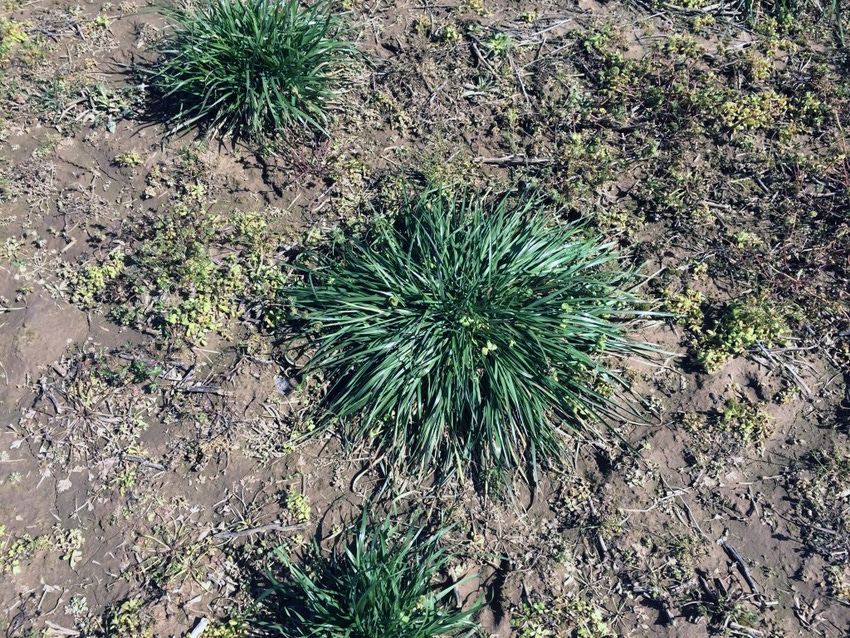April 1, 2016

It is clear we have a fairly widespread problem with ryegrass escaping burndowns this spring. I have received many calls on glyphosate completely missing ryegrass and indeed here at Jackson, Tenn., we have seen the same thing.
Why is it such an issue this spring? I think the warm winter is a major reason as much of the ryegrass was well established in many fields by mid-February.
Another reason in my mind is that more of our ryegrass is now, at the very least, showing low-level glyphosate resistance.
Jason Bond, weed scientist at Mississippi State, thinks the very saturated soil conditions stunted the ryegrass enough to make glyphosate less effective.
Add all this together and I think we have the cause for ryegrass to be very prevalent in fields from Tennessee to Louisiana.
With corn planting already under way, what are the options to try to control ryegrass? At this point there is really only one. Gramoxone at 48 ounces per acre plus atrazine at 32 ounces and follow it up 10 days later on any regrowth with another application of Gramoxone.
If the corn is planted and emerged by the time ryegrass regrowth is seen, then try 48 ounces per acre of atrazine and a quart of crop oil perc acre as a followup to try to stomp the ryegrass down while it is trying to recover.
Ryegrass is very competitive to corn. A recent economic study recent economic study at Mississippi State — Preplant Intervals for Clethodim Application in Mississippi — showed that every $1 spent on ryegrass control in corn returned $13 in better corn yield.
Larry Steckel is the Extension Weed Specialist at the University of Tennessee. Email: [email protected].
You May Also Like




